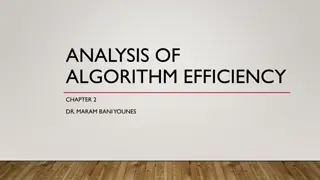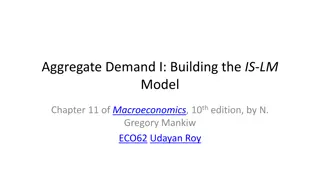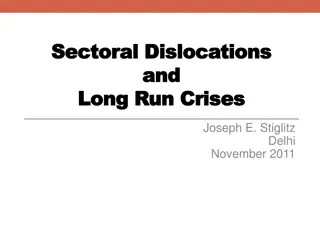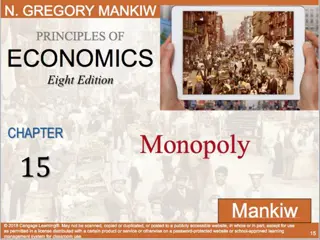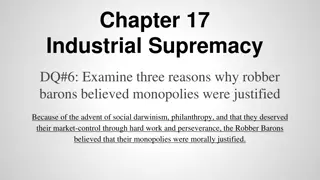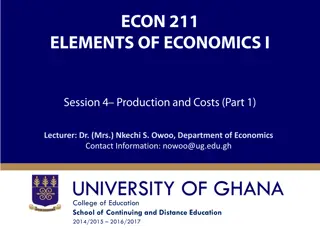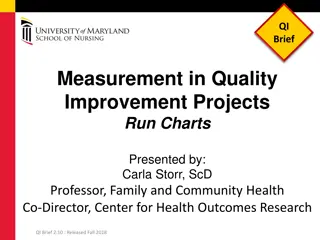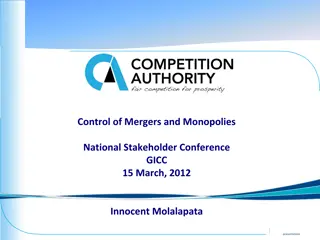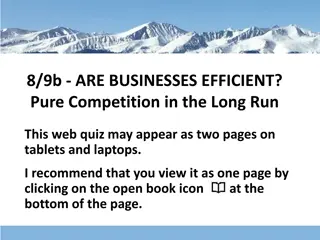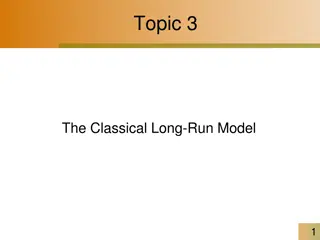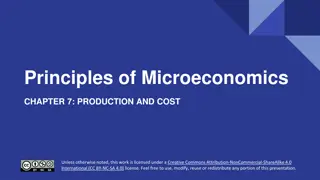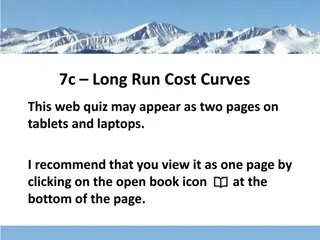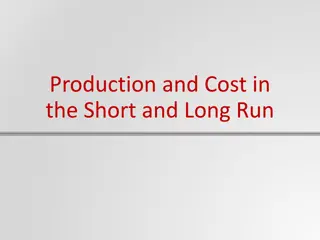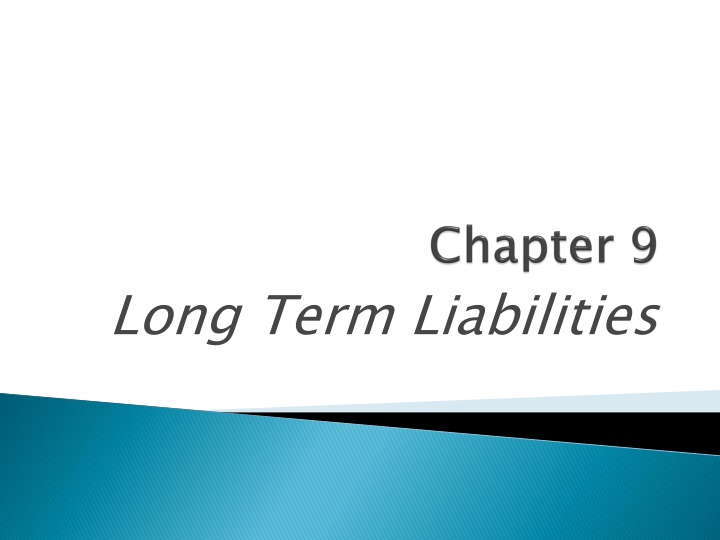
Efficiency in Monopolies: Long-Run Impacts & Strategies
Delve into the implications of pure monopoly on pricing, production, and efficiency, exploring price discrimination, regulation dilemmas, and the role of barriers to entry. Understand the adjustment to long-run equilibrium, profit maximization, and the nuances of monopolistic pricing strategies.
Download Presentation

Please find below an Image/Link to download the presentation.
The content on the website is provided AS IS for your information and personal use only. It may not be sold, licensed, or shared on other websites without obtaining consent from the author. If you encounter any issues during the download, it is possible that the publisher has removed the file from their server.
You are allowed to download the files provided on this website for personal or commercial use, subject to the condition that they are used lawfully. All files are the property of their respective owners.
The content on the website is provided AS IS for your information and personal use only. It may not be sold, licensed, or shared on other websites without obtaining consent from the author.
E N D
Presentation Transcript
Capital Structure Debt Financing - Bonds Interest is tax deductible Equity Financing - Stocks Dividends paid is not tax deductible
Same as Note Payable Note is to one lender Bonds are to several lenders Interest is paid every 6 months twice a year Usually 20 plus years Bonds sold for capital expenditures Sold to the public or to Large banks (underwrite) for a fee
Indenture characteristics of bond Principle Face Amount Interest - paid over life of the bond Sinking Fund- payments of principle to acct Secured or unsecured (debentures) Term or serial all at once or installments Callable (redeemable) borrower can call it back Convertible lender can change it to stock
Issue Price of Bond Present Value of Principle (Face Amount) $1 plus Present Value of Interest payments $1 Annuity When interest is paid semi annual interest rate is half and time is double Use the same time and % for both principle and interest Market Interest Rate is how to rate the value of the bond Stated Interest Rate is what you use for interest payment and is stated on the bond
The higher the market interest rate, the lower the bond issue price will be. The lower the market interest rate, the higher the bond issue price will be.
$100,000 bond issued, 10 years, Stated Interest 7%, Market Interest 7% (same) Face Amount Interest Payments-6months Market Interest (7%/2) Number of Periods (10yrs X2) 20periods $100,000 3,500 3.5%
Table : Face Value * multiplier $1 3.5% and 20 periods Interest Payment * $1 annuity 3.5% and 20 periods $100000 * .05257 = 50257 $3,500 * 14.2124= 49743 Issue Price 100000 Excel: PV(Market%,#periods,Interest payment, Face amount,0) PV(.035,20,3500,100000,0)
FV= $100000 PMT= 3,500 I/yr = N = 3.5 20 Press PV BE 9-2 pg 443
Issue Bond Cash 100000 Bonds Pay 100000 Pay Interest Expense Interest Expense Cash 3500 3500
$100,000 bond issued, 10 years, Stated Interest 7%, Market Interest 8% 8% Face Amount Interest Payments-6months Market Interest (8% Number of Periods (10yrs X2) 20periods $100,000 3,500 8%/2) 4.0% 4.0%
Table : Face Value * multiplier $1 4.0% Interest Payment * $1 annuity 4.0% and 20 periods $100000 * .045639 $3,500 * 13.59033 = 47566 Issue Price 93205 Excel: PV(Market%,#periods,Interest payment, Face amount,0) PV(.04,20,3500,100000,0) 4.0% and 20 periods 045639 = 45639 13.59033 = 47566 45639 93205
FV= $100000 PMT= 3,500 I/yr = N = 4.0 20 Press PV BE 9-3 pg 443
Issue Bond Cash 93205 Bonds Pay 93295 Pay Interest Expense ( 1st6 months) Interest Expense Bonds Payable Cash 3500 Pay Interest Expense (2nd6 months) Interest Expense Bonds Payable Cash 3500 3728 (93205*4%) 228 3737 (93205+228*4%) 237
Date Interest Paid (Cash) Interest Expense Increase in Carrying Value Carrying Value Pg 426
$100,000 bond issued, 10 years, Stated Interest 7%, Market Interest 6% 6% Face Amount Interest Payments-6months Market Interest (6% Number of Periods (10yrs X2) 20periods $100,000 3,500 6%/2) 3.0% 3.0%
Table : Face Value * multiplier $1 3.0% Interest Payment * $1 annuity 3.0% and 20 periods $100000 * .55368 $3,500 * 14.87747 = 52071 Issue Price 107,439 Excel: PV(Market%,#periods,Interest payment, Face amount,0) PV(.03,20,3500,100000,0) 3.0% and 20 periods 55368 = 55368 14.87747 = 52071 55368 107,439
FV= $100000 PMT= 3,500 I/yr = N = 3.0 20 Press PV BE 9-4 pg 443
Issue Bond Cash 107439 Bonds Pay 107439 Pay Interest Expense ( 1st6 months) Interest Expense Bonds Payable Cash 3500 Pay Interest Expense (2nd6 months) Interest Expense Bonds Payable Cash 3500 3223 (107439*3%) 277 3215 (107439-285*3%) 285
Date Interest Paid (Cash) Interest Expense Increase in Carrying Value Carrying Value Pg 428
At Maturity Bond Payable 100000 Cash 100000 Before Maturity -premium Bond Payable 93670 Loss 13207 Cash 106877
Fixed Payment Interest (Rate* principle) Difference (reduction in principle) Get Mortgage Cash Make a Payment Principle Interest Expense M/P Cash
See page 433 BE 9-17 pg 444
Lessee Lessor --User --Owner Lease Contractual agreement for the right to use the asset for a specified time Operating Leases rentals Capital Leases buying a capital asset
Debt to Equity Total Liabilities/ Total SE Measure of financial leverage Return on Assets Net Income/Avg Total Assets Overall profitability Return on Equity Net Income/Avg Total SE ability to generate earnings from resources that owners provide Times Interest Earned Net Income+InterestX+Tax X/Interest X Compares interest expense to net income available to pay interest expense BE 9-18 pg 444
Problems A 9-1, 9-2, 9-4, 9-6, 9-7A




